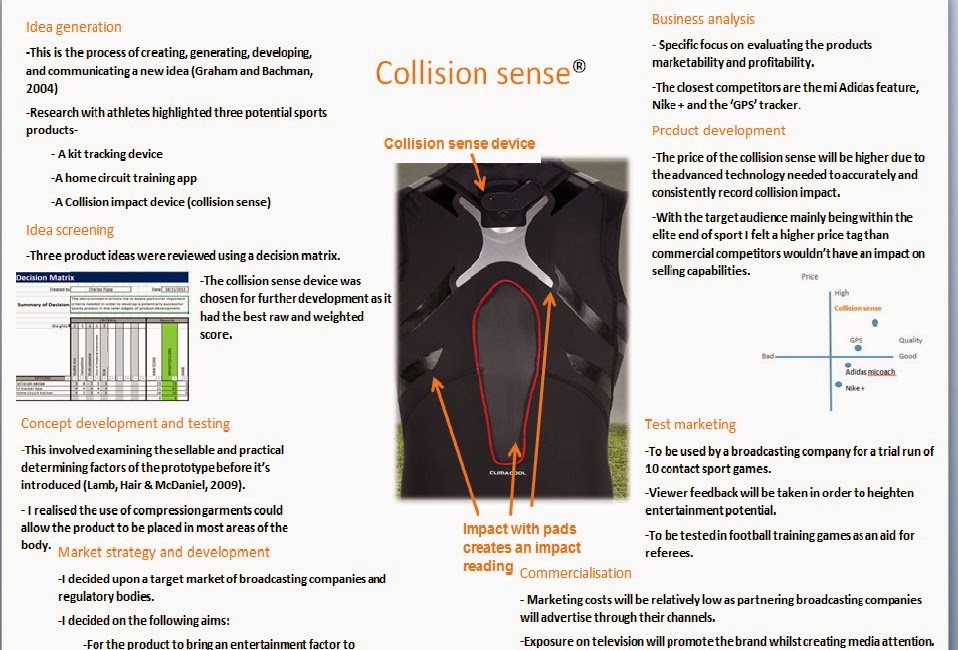Tuesday, 11 February 2014
Thursday, 6 February 2014
Commercialisation
The last stage of new product development is the
commercialisation stage, this involves finalising the identified concept, launching
the product and interacting with potential stakeholders (Yeniyurt, Henke &
Yalcinkaya, 2013). During this phase the products transition from the research
and development team to an operating unit of the organisation will occur. Veryzer,
1998 states that during the commercialisation phase there should be a specific
focus on analysing the results from the test market phase, adapting the
marketing mix and then refining plans within the manufacturing and marketing of
the product. Organisations at this stage need to decide when, where and who to
market their product to in order to secure success upon release.
Its common during the commercialisation phase for excessive
amounts of money to be spent on advertising, however our plans on reducing this
cost allow for better production capabilities and potentially a quicker time
period before profit, this will be achieved by making negotiations with
television broadcasters and governing bodies prior to release of the product,
therefore if a deal is secured with a broadcasting company, promotions such as
advertising would be primarily led by the broadcasters, mainly through
the use of advertisements on their channel’s as they will be using the collision sense
technology to heighten the spectacle of the sports events they broadcast and
thus increase regular viewers and subscriptions. Once the product has been released there will
be a focus on negotiating the usage of the product in large sporting events
such as the football world cup, this will help grow the brand as large events mean
larger exposure to viewers which will create a bigger ‘hype’ about the product,
therefore making it more desirable to other broadcasting companies, allowing
expansion to take place.
An identified negative from prior stages is that with the product, organisation and technology all being new to the sports business a large corporation may find a partnership risky, therefore the product will come with a warranty, in addition an option of a no contract trial phase will be open for negotiation with potential partners.
Reference list
An identified negative from prior stages is that with the product, organisation and technology all being new to the sports business a large corporation may find a partnership risky, therefore the product will come with a warranty, in addition an option of a no contract trial phase will be open for negotiation with potential partners.
Reference list
Yeniyurt, S., Henke Jr, J. W., & Yalcinkaya, G. (2013).
A longitudinal analysis of supplier involvement in buyers’ new product
development: working relations, inter-dependence, co-innovation, and
performance outcomes. Journal of the Academy of Marketing Science, 1-18.
Veryzer, R. W. (1998). Discontinuous innovation and the new
product development process. Journal of product innovation management, 15(4),
304-321.
Subscribe to:
Posts (Atom)
